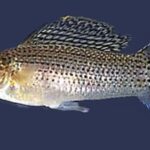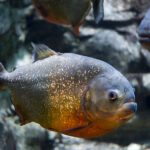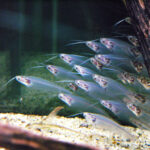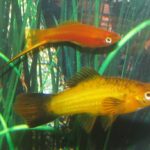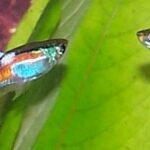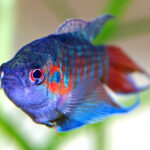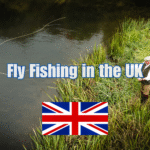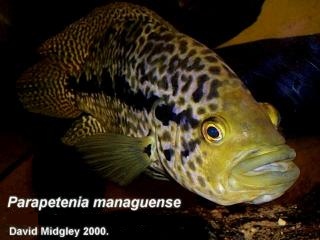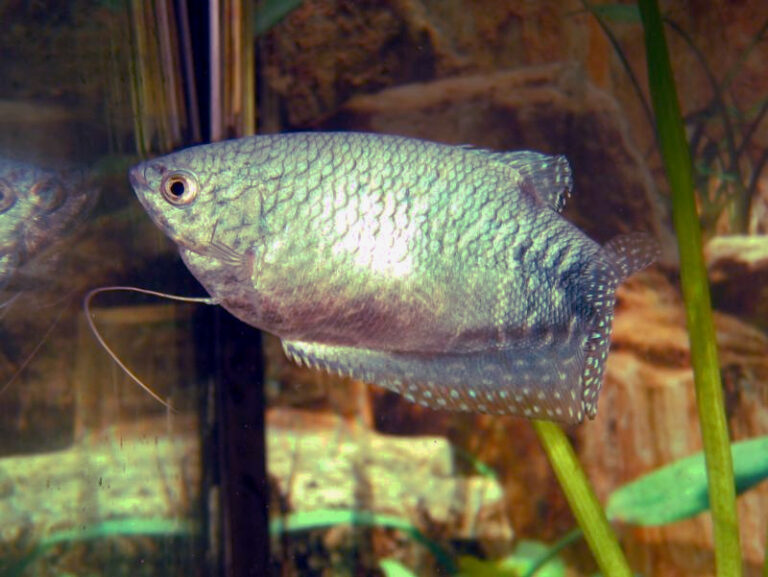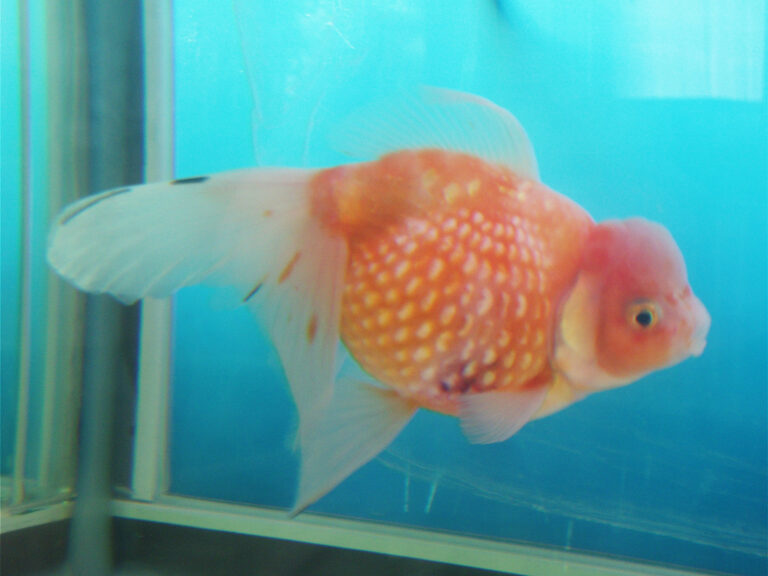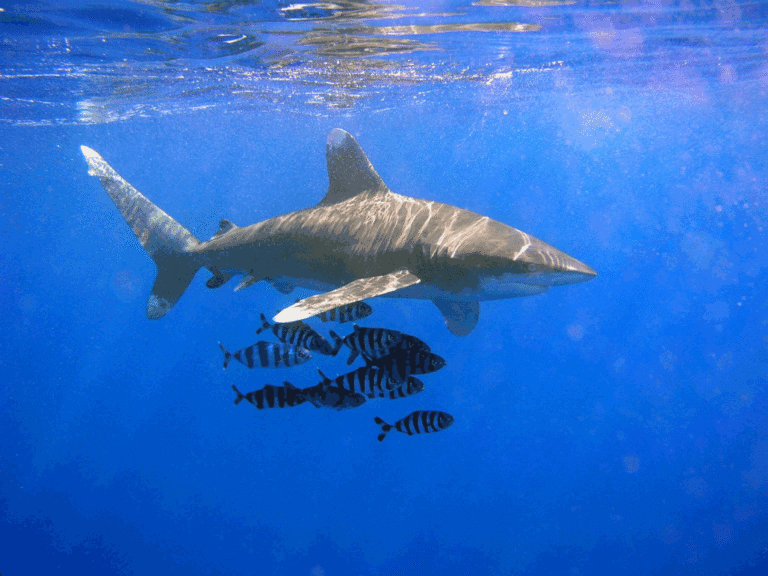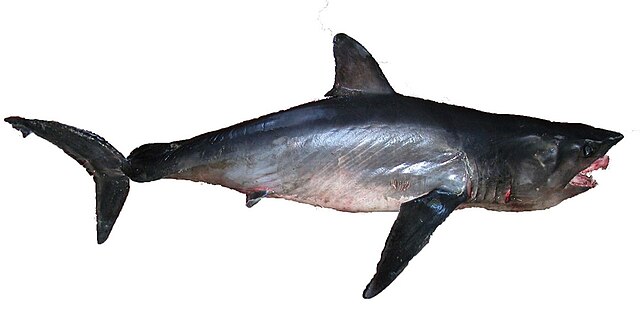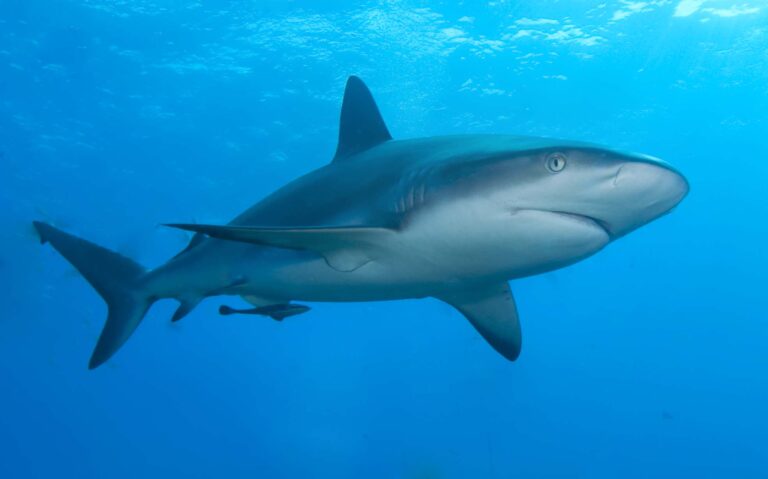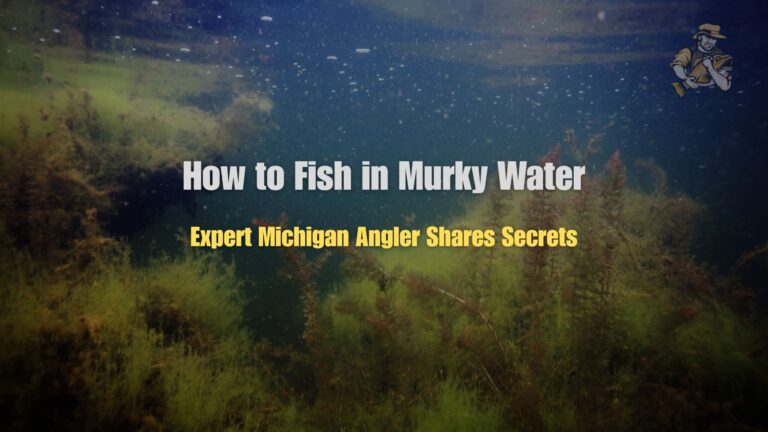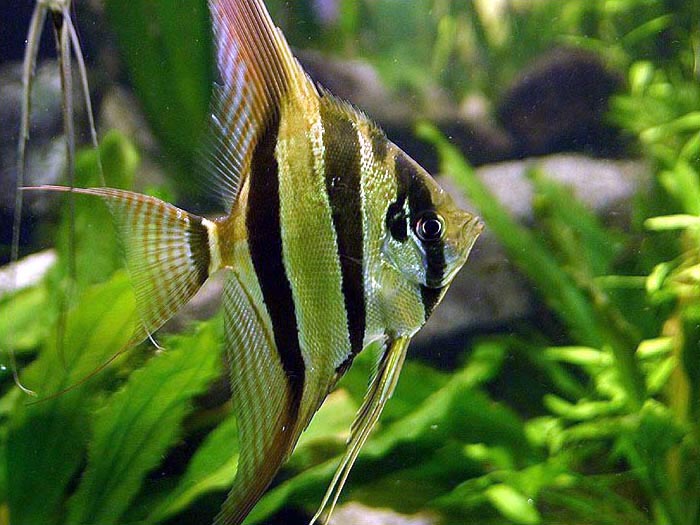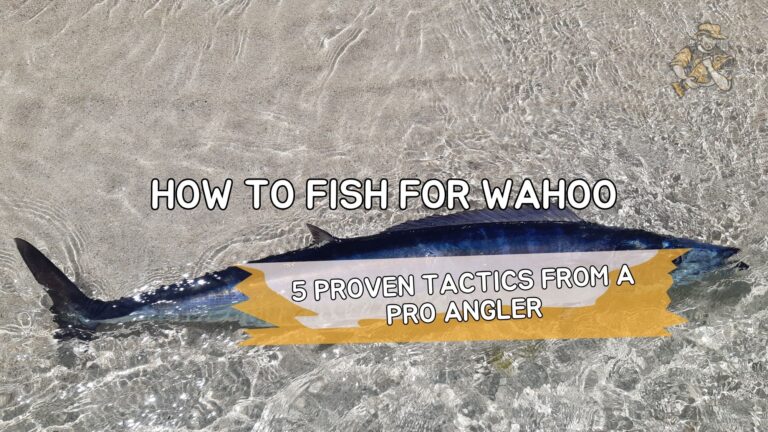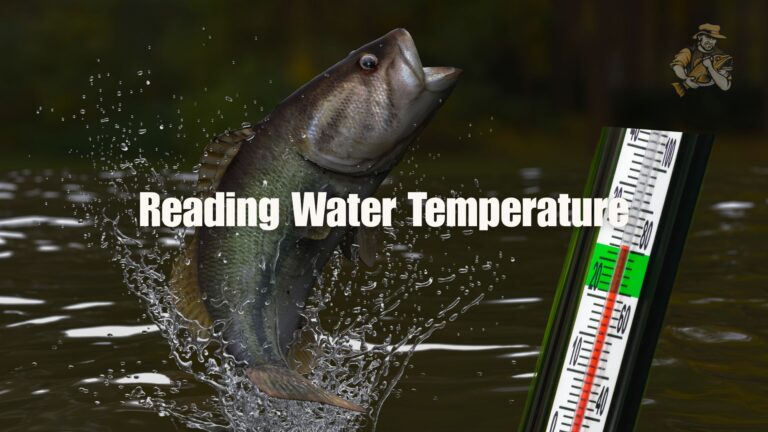Blue Platy
By Ryan Maron | Last Modified: June 14, 2025
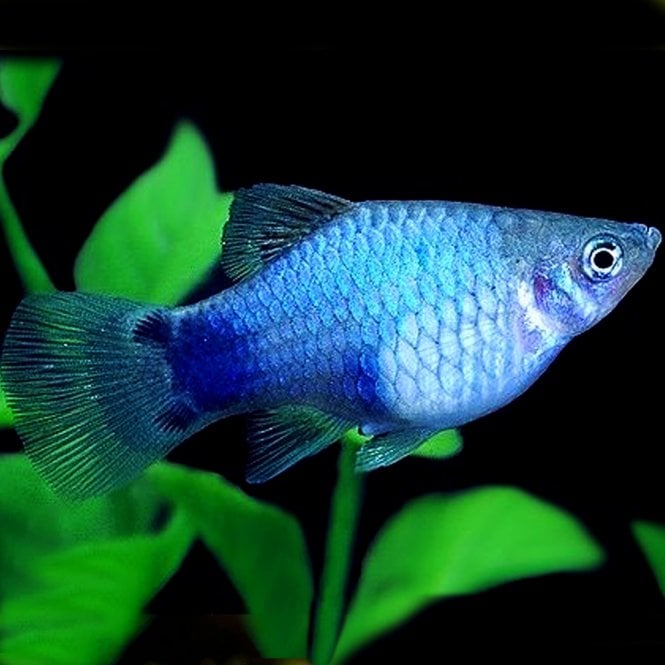
The Blue Platy (Xiphophorus maculatus) stands as one of the most recognizable and culturally significant freshwater fish species in the aquarium trade. This small, vibrant member of the Poeciliidae family has captured the attention of aquarists worldwide through its remarkable color variations, peaceful temperament, and exceptional adaptability to captive environments. Native to the freshwater systems of Central America and southern Mexico, the Blue Platy serves as both an ecological indicator species in its natural habitat and a cornerstone species in the global ornamental fish industry.
The ecological importance of Blue Platy populations extends beyond their aesthetic appeal. In their native ecosystems, these fish function as vital intermediate consumers, controlling mosquito larvae populations while serving as prey for larger predatory species. Their role in nutrient cycling and their sensitivity to water quality changes make them valuable bioindicators for freshwater ecosystem health. The species has also contributed significantly to scientific research, particularly in genetics and behavioral studies, due to their readily observable traits and breeding patterns.
| Feature | Details |
|---|---|
| Common Name | Blue Platy |
| Scientific Name | Xiphophorus maculatus |
| Family | Poeciliidae |
| Typical Size | 4-7 cm (1.5-2.8 inches), 3-8 grams |
| Habitat | Shallow freshwater streams and coastal areas |
| Diet | Omnivorous – algae, insects, plant matter |
| Distribution | Central America to southern Mexico |
| Conservation Status | Least Concern |
Taxonomy & Classification
The Blue Platy belongs to the comprehensive taxonomic hierarchy that places it within the order Cyprinodontiformes, family Poeciliidae, and genus Xiphophorus. First scientifically described by Albert Günther in 1866, Xiphophorus maculatus has undergone several taxonomic revisions as genetic analysis has refined our understanding of poeciliid relationships. The genus Xiphophorus encompasses approximately 28 recognized species, with the Blue Platy representing one of the most morphologically diverse members.
Within the Poeciliidae family, Blue Platy populations share evolutionary lineage with other popular aquarium species including guppies, mollies, and swordtails. Molecular phylogenetic studies indicate that Xiphophorus maculatus diverged from its closest relatives approximately 2-3 million years ago during the Pliocene epoch. The species exhibits considerable genetic diversity across its natural range, with distinct populations showing variations in coloration, fin morphology, and behavioral traits.
Subspecies classification within Xiphophorus maculatus remains an active area of research. Some ichthyologists recognize several geographic variants based on morphological differences, while others argue for a more conservative approach until comprehensive genetic analysis is complete. The northern populations from the Río Pánuco system show distinct characteristics from southern populations in Guatemala, suggesting potential subspecific differentiation.
Physical Description
The Blue Platy exhibits remarkable sexual dimorphism and color variation that makes identification both straightforward and complex. Adult females typically reach 6-7 centimeters in length, displaying a robust, laterally compressed body profile with a pronounced ventral region adapted for carrying developing fry. Males remain smaller at 4-5 centimeters, featuring a more streamlined body shape and the characteristic gonopodium, a modified anal fin used for reproduction.
The species derives its common name from the stunning blue coloration that can range from pale powder blue to deep cobalt, often accompanied by metallic sheens that reflect light at different angles. However, natural populations display extensive color polymorphism including red, orange, yellow, and mixed color patterns. The blue varieties specifically show concentration of chromatophores containing guanine crystals that produce the distinctive metallic blue appearance.
Fin morphology varies significantly between sexes and color varieties. Males possess elongated dorsal fins with intricate patterns, while females maintain more modest fin proportions. The caudal fin typically displays a fan-shaped profile with subtle color gradations. Body patterns can include spots, vertical bars, or solid coloration, with some individuals showing complex combinations that have made them highly sought after in the aquarium trade.
Scale structure follows the typical poeciliid pattern with cycloid scales arranged in regular rows. Adult Blue Platy specimens typically possess 26-28 lateral line scales, with variation observed between geographic populations. The lateral line system remains well-developed, providing excellent mechanoreception capabilities for detecting water movement and predator presence.
Habitat & Distribution
Blue Platy populations naturally inhabit the freshwater and brackish systems of Central America, with their primary distribution extending from the coastal plains of Mexico through Guatemala, Belize, and northern Honduras. The species shows remarkable adaptability to various aquatic environments, colonizing slow-moving rivers, coastal streams, cenotes, and even temporary pools during seasonal flooding events.
Native habitat characteristics include water temperatures ranging from 22-28°C, pH levels between 7.0-8.5, and moderate to high mineral content typical of limestone-influenced watersheds. Blue Platy populations thrive in areas with abundant vegetation, utilizing submerged plants for shelter, foraging, and reproductive activities. Water depth preferences range from shallow marginal areas to depths of approximately 2 meters, though most populations concentrate in the upper water column.
The species demonstrates exceptional tolerance for salinity fluctuations, allowing populations to establish in coastal areas where freshwater systems interface with marine environments. This euryhaline capacity has enabled Blue Platy populations to colonize diverse ecological niches and has contributed to their success as an introduced species in various global locations.
Human activities have significantly expanded the species’ global distribution through both intentional and accidental introductions. Established populations now exist in warm-water systems across the United States, particularly in Florida and Texas, as well as in parts of Australia, Asia, and the Caribbean. These introduced populations sometimes impact native fish communities through competition for resources and potential hybridization with closely related species.
Diet & Feeding Behavior
Blue Platy feeding ecology reflects their classification as opportunistic omnivores with adaptable foraging strategies. In natural environments, their diet consists primarily of algae, small invertebrates, detritus, and organic matter. Stomach content analysis reveals that approximately 40% of their diet comprises plant material, 35% invertebrates, and 25% organic detritus and microorganisms.
Primary food sources include filamentous algae, diatoms, small crustaceans, mosquito larvae, midge larvae, and various aquatic worms. Blue Platy populations exhibit surface feeding behavior when targeting mosquito larvae and terrestrial insects that fall into the water. Their upturned mouth structure facilitates this surface-oriented feeding strategy while also allowing efficient grazing on algae-covered surfaces.
Feeding behavior varies significantly with water temperature, photoperiod, and prey availability. During warmer months, Blue Platy individuals increase their feeding frequency to support higher metabolic demands and reproductive activities. Social feeding behavior occurs when food resources are concentrated, with individuals forming loose aggregations around abundant food sources.
Juvenile Blue Platy specimens require higher protein content in their diet to support rapid growth rates. Young fish primarily consume small zooplankton, including copepods, rotifers, and newly hatched brine shrimp. As they mature, their diet gradually shifts toward the more varied omnivorous pattern typical of adults. This dietary flexibility contributes significantly to their success in diverse aquatic environments.
Behavior & Adaptations
Blue Platy behavioral patterns reflect sophisticated adaptations for survival in dynamic freshwater environments. These fish exhibit schooling behavior when threatened, forming cohesive groups that provide protection through the dilution effect and increased vigilance. However, during normal foraging activities, they display more solitary or loosely aggregated behavior patterns.
Territorial behavior emerges primarily during reproductive periods, with dominant males establishing and defending small territories around optimal spawning sites. Aggressive displays include fin spreading, lateral displays, and direct chasing of subordinate individuals. The intensity of territorial behavior correlates with population density and resource availability.
The species demonstrates remarkable physiological adaptations for surviving in variable water conditions. Blue Platy populations can tolerate dissolved oxygen levels as low as 3 mg/L, temperature fluctuations from 18-32°C, and rapid salinity changes. These adaptations involve specialized gill structures, modified kidney function, and behavioral thermoregulation strategies.
Predator avoidance behaviors include rapid escape responses, cryptic coloration in juveniles, and habitat selection strategies that minimize exposure to larger predatory fish. When threatened, Blue Platy individuals display erratic swimming patterns and seek shelter among vegetation or structural complexity. Their ability to remain motionless near cover provides effective camouflage against visual predators.
Communication within Blue Platy populations occurs through visual displays, chemical cues, and limited acoustic signals. Males produce low-frequency sounds during courtship through specialized muscle contractions. Chemical communication plays a significant role in mate recognition and reproductive timing, with females capable of detecting male pheromones that indicate reproductive condition.
Reproduction & Life Cycle
Blue Platy reproductive biology exemplifies the livebearing strategy that characterizes the Poeciliidae family. Sexual maturity occurs relatively early, with females reaching reproductive capability at approximately 3-4 months of age and males slightly earlier at 2-3 months. This rapid maturation contributes significantly to their population growth potential and success as an introduced species.
The reproductive cycle begins with elaborate courtship behaviors initiated by mature males. Courtship displays include fin extensions, body undulations, and persistent following of receptive females. Males use their gonopodium to transfer sperm packets directly to females during brief mating encounters. Female Blue Platy individuals can store sperm for extended periods, allowing multiple broods from a single mating event.
Gestation periods typically range from 24-30 days, depending on water temperature and female condition. Higher temperatures accelerate embryonic development, while cooler conditions extend the gestation period. Pregnant females develop a distinctive gravid spot near the anal fin, and their abdomen becomes noticeably distended as fry development progresses.
Brood sizes vary considerably based on female size, age, and environmental conditions. First-time mothers typically produce 10-20 fry, while experienced females can produce broods of 40-80 offspring. The largest recorded broods exceed 100 fry from exceptionally large females in optimal conditions. Newborn fry measure approximately 6-8 millimeters and are immediately capable of independent feeding and swimming.
Parental care in Blue Platy populations is minimal, with adults showing no protective behavior toward their offspring. In fact, cannibalistic behavior toward fry is common, particularly in confined spaces or when alternative food sources are limited. This reproductive strategy emphasizes quantity over individual offspring care, maximizing reproductive output in unpredictable environments.
Predators & Threats
Blue Platy populations face predation pressure from various aquatic and semi-aquatic species throughout their life cycle. Primary predators include larger fish species such as bass, pike, and other predatory freshwater fish that inhabit overlapping habitats. Juvenile Blue Platy individuals face additional threats from smaller predatory fish, aquatic insects, and invertebrates capable of consuming small fry.
Avian predators represent a significant threat, particularly in shallow water environments where Blue Platy populations concentrate. Herons, egrets, kingfishers, and other fish-eating birds regularly prey upon adult and juvenile specimens. The species’ surface-feeding behavior increases their vulnerability to aerial predation during certain feeding periods.
Habitat degradation poses the most significant long-term threat to native Blue Platy populations. Agricultural runoff, urban development, and water extraction have severely impacted many native freshwater systems throughout Central America. Pollution from agricultural chemicals, particularly pesticides and fertilizers, affects both direct toxicity and food web disruption.
Competition from introduced species creates additional pressure on native populations. In areas where multiple Xiphophorus species have been introduced, hybridization can threaten the genetic integrity of native Blue Platy populations. Platy fish breeding programs in captivity have created numerous hybrid varieties that can potentially interbreed with wild populations if released.
Climate change impacts include altered precipitation patterns, increased temperature extremes, and modified seasonal cycles that affect reproductive timing and food availability. Drought conditions can eliminate temporary breeding habitats, while excessive rainfall can cause habitat destruction through flooding and increased sedimentation.
Disease outbreaks occasionally impact Blue Platy populations, particularly in areas with high population density or environmental stress. Bacterial infections, parasitic diseases, and viral pathogens can cause significant mortality events, though healthy populations typically recover rapidly due to their high reproductive rate.
Conservation Status
The International Union for Conservation of Nature (IUCN) currently lists Blue Platy populations as Least Concern, reflecting their stable population status and wide distribution range. However, this classification masks significant regional variations in population health and the ongoing threats facing native populations in their original habitat range.
Regional conservation assessments reveal more concerning trends for specific populations. Several endemic color varieties and geographic populations have experienced significant declines due to habitat loss and degradation. The Yucatan Peninsula populations, known for their distinctive coloration patterns, face particular pressure from coastal development and water extraction for tourism infrastructure.
Conservation efforts for Blue Platy populations primarily focus on habitat protection and restoration within their native range. Organizations such as the Mexican National Commission for Protected Natural Areas have established conservation programs targeting freshwater ecosystems that support native poeciliid populations. These programs emphasize watershed management, pollution control, and sustainable water use practices.
Ex-situ conservation programs maintain genetic diversity through carefully managed breeding populations in research institutions and public aquariums. These programs serve as genetic repositories for native varieties and provide research opportunities for understanding the species’ ecological requirements and evolutionary biology.
The species’ success in the aquarium trade creates both conservation opportunities and challenges. While captive breeding reduces pressure on wild populations, the introduction of non-native varieties can threaten native genetic diversity through hybridization. Conservation organizations recommend strict controls on aquarium fish releases and support for native variety breeding programs.
International cooperation between Mexico, Guatemala, Belize, and Honduras has enhanced conservation efforts through shared watershed management and research programs. Cross-border initiatives focus on protecting migratory corridors and maintaining genetic connectivity between populations in different countries.
Human Interaction
Blue Platy populations have maintained significant cultural and economic relationships with human communities throughout their native range for centuries. Indigenous communities traditionally utilized these fish as both food sources and natural mosquito control agents in household water storage systems. This traditional knowledge contributed to early understanding of their ecological value and adaptability to human-modified environments.
The modern aquarium trade has transformed Blue Platy from a regional species to a globally recognized ornamental fish. Commercial breeding operations produce millions of specimens annually, generating substantial economic value throughout the supply chain. The species ranks among the top ten most popular freshwater aquarium fish worldwide, with sales contributing significantly to the ornamental fish industry’s estimated $15 billion annual value.
Scientific research applications have utilized Blue Platy populations extensively due to their genetic tractability and observable phenotypic traits. Research programs have contributed to fundamental understanding of genetics, evolutionary biology, behavioral ecology, and toxicology. The species serves as a model organism for studying sex determination, color genetics, and reproductive behavior.
Educational programs in schools and public aquariums frequently feature Blue Platy specimens to teach concepts related to genetics, reproduction, and aquatic ecology. Their hardy nature and interesting behaviors make them ideal subjects for hands-on learning experiences and scientific observation activities.
Commercial aquaculture operations occasionally utilize Blue Platy populations for biological mosquito control in specific applications. Their effectiveness at consuming mosquito larvae makes them valuable for integrated pest management programs, particularly in areas where chemical control methods are inappropriate or ineffective.
Regulatory frameworks governing Blue Platy trade and transport vary significantly between countries and jurisdictions. Some regions have implemented strict controls on importation and release to prevent ecological impacts, while others maintain minimal restrictions. International trade protocols under CITES do not currently apply to this species due to its stable conservation status.
Interesting Facts
Blue Platy individuals possess the remarkable ability to change their color intensity based on environmental conditions, social status, and emotional state. Dominant males often display more vibrant coloration during territorial disputes and courtship activities, while stressed individuals may show significantly muted colors. This physiological response involves rapid redistribution of chromatophores and reflects the species’ sophisticated neural control of coloration.
The species exhibits unusual reproductive flexibility through their capacity for superfetation, allowing females to carry multiple broods at different developmental stages simultaneously. This adaptation maximizes reproductive output and provides evolutionary advantages in unpredictable environments where optimal breeding conditions may be brief or infrequent.
Temperature-dependent sex determination occurs in some Blue Platy populations, with environmental temperatures during early development influencing the sex ratio of offspring. Higher temperatures tend to produce more males, while cooler conditions favor female development. This mechanism provides population-level adaptation to changing environmental conditions.
Blue Platy populations demonstrate remarkable learning abilities and memory retention, with individuals capable of recognizing familiar environments, remembering feeding locations, and distinguishing between different human caretakers in aquarium settings. Behavioral studies have documented maze-learning capabilities and problem-solving behaviors that suggest higher cognitive abilities than previously recognized in small fish species.
The species’ contribution to genetic research has led to the identification of specific genes controlling color patterns, fin development, and sex determination. These discoveries have applications beyond aquarium fish breeding, contributing to broader understanding of vertebrate development and evolutionary biology.
Wild Blue Platy populations exhibit seasonal migration behaviors in response to water level changes and food availability. During dry seasons, fish concentrate in permanent water bodies, while wet season flooding allows expansion into temporary habitats for feeding and reproduction. These movements can cover distances of several kilometers and involve sophisticated navigation abilities.
Frequently Asked Questions
How long do Blue Platy fish typically live in aquarium settings?
Blue Platy individuals typically live 3-5 years in well-maintained aquarium environments, with some exceptional specimens reaching 6-7 years. Factors affecting lifespan include water quality, diet, tank size, and genetic background. Proper care including stable water parameters, varied nutrition, and appropriate tank mates significantly extends their longevity compared to suboptimal conditions.
Can Blue Platy survive in outdoor ponds during winter months?
Blue Platy populations cannot survive freezing temperatures and require water temperatures above 18°C for long-term survival. In temperate climates, they must be moved indoors during winter months or maintained in heated outdoor systems. However, in subtropical and tropical regions, they can successfully overwinter in outdoor ponds with adequate depth and shelter.
What water conditions are optimal for Blue Platy health and reproduction?
Optimal conditions include water temperatures of 22-26°C, pH levels between 7.0-8.2, and moderate hardness of 10-25 dGH. They tolerate slight salinity increases and benefit from well-oxygenated water with gentle filtration. Regular water changes of 25-30% weekly help maintain water quality and support healthy reproduction rates.
How can aquarists distinguish between male and female Blue Platy fish?
Males are smaller with modified anal fins called gonopodia used for reproduction, while females are larger with fan-shaped anal fins and more rounded body profiles. Adult females often display a dark gravid spot near the anal fin when pregnant. Males also typically show more intense coloration and longer dorsal fins compared to females.
Conclusion
The Blue Platy represents a remarkable example of evolutionary adaptability and ecological success, serving critical roles both in natural freshwater ecosystems and human-managed environments. Their importance as intermediate consumers in native food webs, combined with their value as research subjects and aquarium specimens, demonstrates the multifaceted relationships between aquatic species and human society. Conservation of native populations requires continued attention to habitat protection and sustainable management practices to ensure this species continues to thrive in its natural range while providing benefits to human communities worldwide.
Share The Article:
More Fish Species:
-
Stonecat
The Stonecat (Noturus flavus) represents one of North America’s most distinctive freshwater catfish species, serving as a crucial indicator…
-
Siamese Fighting Fish
The Siamese Fighting Fish, scientifically known as *Betta splendens*, stands as one of the most recognizable and culturally significant…
-
Yellow Bullhead
The Yellow Bullhead (*Ameiurus natalis*) represents one of North America’s most widespread and ecologically significant freshwater catfish species. This…
-
Jaguar Cichlid
The Jaguar Cichlid stands as one of Central America’s most formidable predatory fish, renowned for its impressive size, aggressive…
-
Gold Gourami
The Gold Gourami (Trichopodus trichopterus) represents one of Southeast Asia’s most recognizable freshwater fish species, distinguished by its robust…
-
Pearlscale Goldfish
The Pearlscale Goldfish represents one of the most distinctive and captivating varieties of ornamental carp, distinguished by its characteristic…
Discover
-
Oceanic Whitetip Shark
The Oceanic Whitetip Shark (*Carcharhinus longimanus*) stands as one of the ocean’s most formidable and recognizable apex predators, distinguished…
-
Longfin Mako Shark
The Longfin Mako Shark represents one of nature’s most enigmatic and misunderstood predators, embodying both the raw power and…
-
Bora Bora Fishing: What I Learned After 3 Failed Trips
I still remember staring at those impossibly blue waters on my first morning in Bora Bora, thinking I was…
-
Pelagic Thresher Shark
The Pelagic Thresher Shark stands as one of the ocean’s most distinctive and efficient predators, renowned for its dramatically…
-
How to Find Good Fishing Spots That Actually Produce Fish
Finding productive fishing spots is often what separates successful anglers from those who go home empty-handed. It’s not just…
-
Caribbean Reef Shark
The Caribbean Reef Shark (*Carcharhinus perezi*) stands as one of the most recognizable and ecologically significant predators patrolling the…
Discover
-
How to Fish in Murky Water: Expert Michigan Angler Shares Secrets
Last Tuesday, I was standing knee-deep in chocolate-colored water where Kellogg Creek dumps into the Kalamazoo River. Water visibility:…
-
Angelfish
Angelfish represent one of the most recognizable and ecologically significant families of marine fish, encompassing over 85 species distributed…
-
East Coast Surf Fishing: Targeting Striped Bass and Bluefish from Shore
When I first tried East Coast surf fishing nearly 15 years ago, I was absolutely terrible at it. I…
-
Fishing with Kids: How to Make It Fun and Educational
I’ll never forget the look on my son Tommy’s face when he caught his first bluegill. He was six,…
-
How to Fish for Wahoo: 5 Proven Tactics from a Pro Angler
If there’s one fish that’s made me question my sanity over the years, it’s the wahoo. These lightning-fast predators…
-
Reading Water Temperature: Seasonal Cues for Better Fishing
I’ve spent more mornings than I can count staring at a thermometer clipped to my fishing line, watching those…



